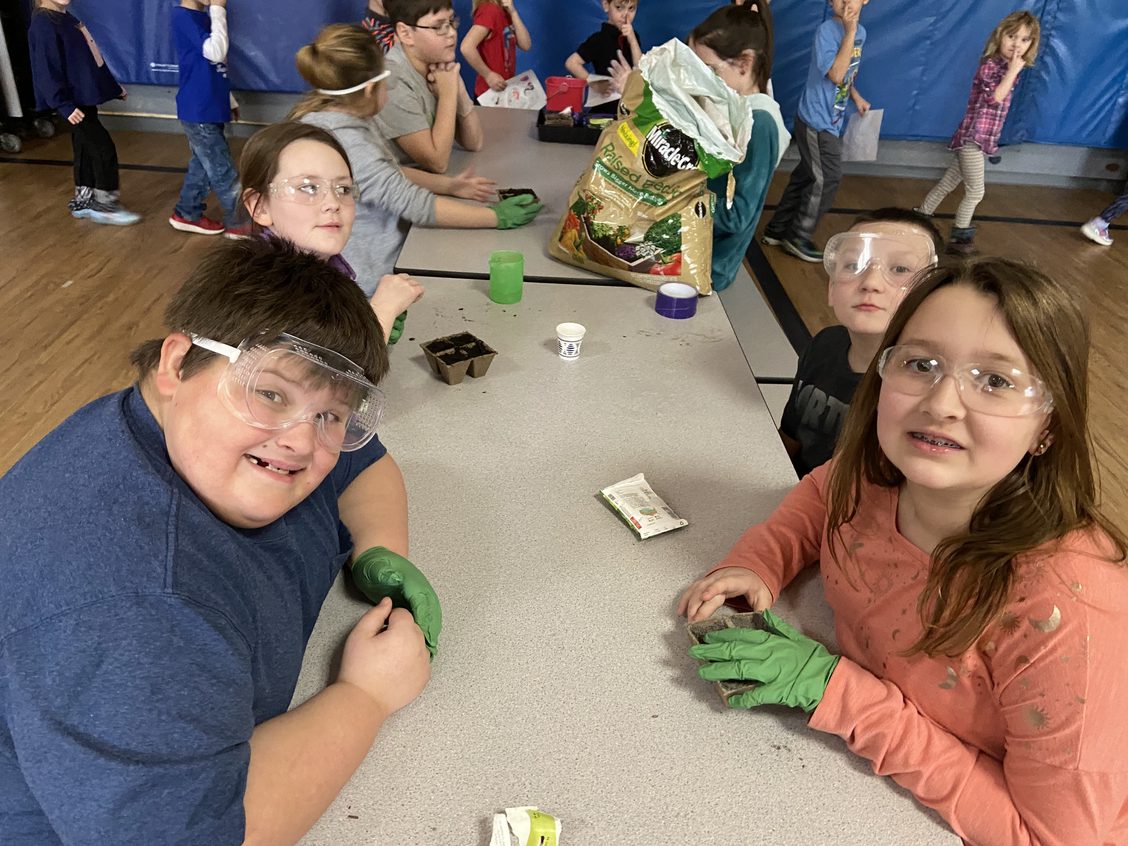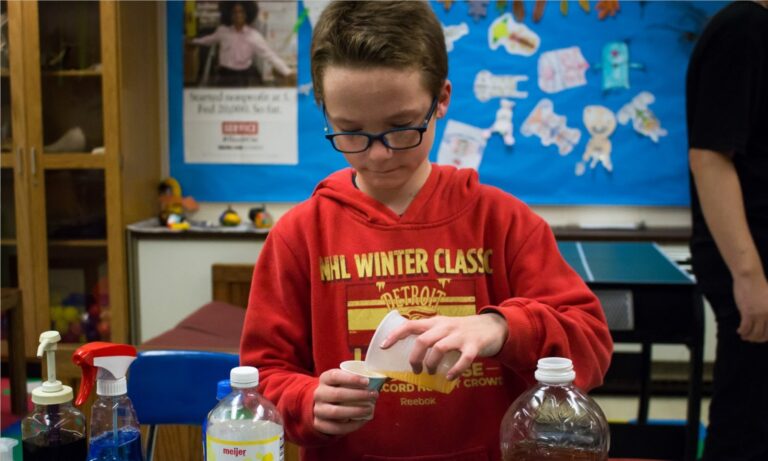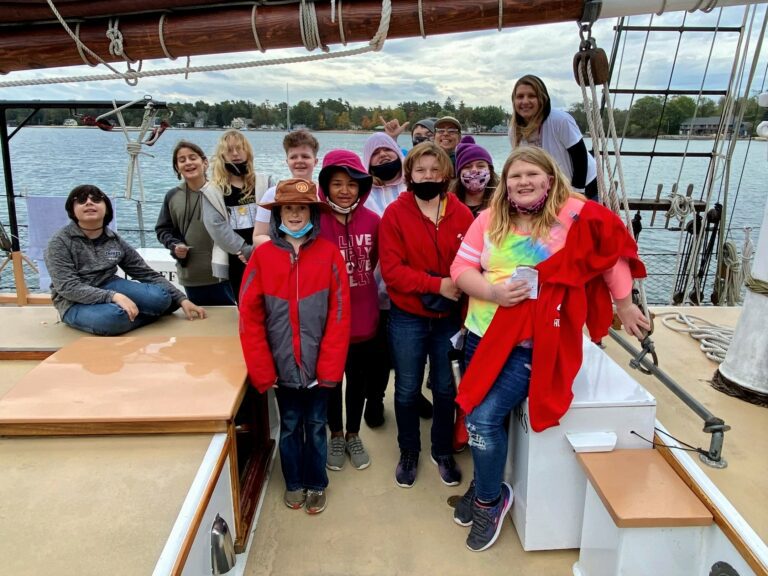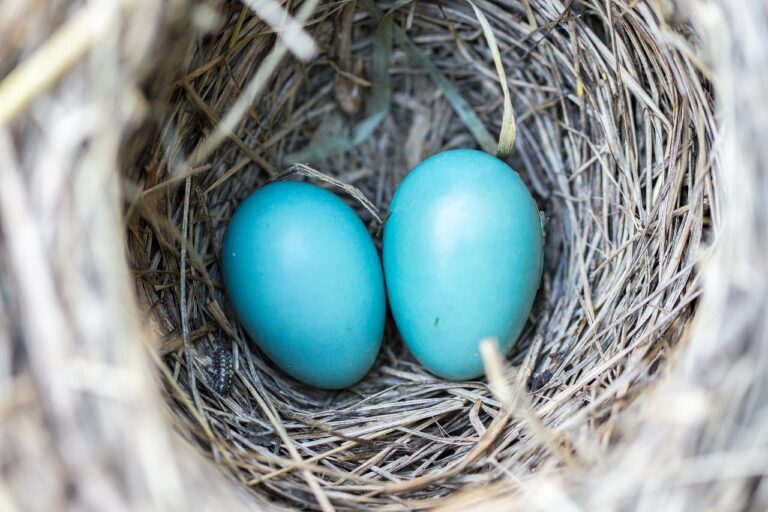Have you ever wondered what vegetables grown on the moon taste like? SEEDS students at Betsie Valley Elementary School are working to answer such a question for NASA.
Chelsea Bentley, who serves as Betsie Valley’s Site Coordinator for the SEEDS EcoSchool program, collaborated with the third through fifth grade students and their teachers to take on the Plant the Moon Challenge, a global science experiment and research challenge to examine how vegetable crops can grow in lunar or Martian soil, ranging from classroom students to astronomy professionals. Each team received lunar soil simulant regolith from the University of Central Florida’s CLASS Exolith Lab to conduct a series of experiments determined by the participants.
“This was a great way for kids to be exposed to science vocabulary beyond their current studies and learn words like, ‘hypothesis’ and ‘variable,’ before they’re even expected to know what those words mean. And we got to grow vegetables in the process!”
— Chelsea Bentley, EcoSchool Site Coordinator
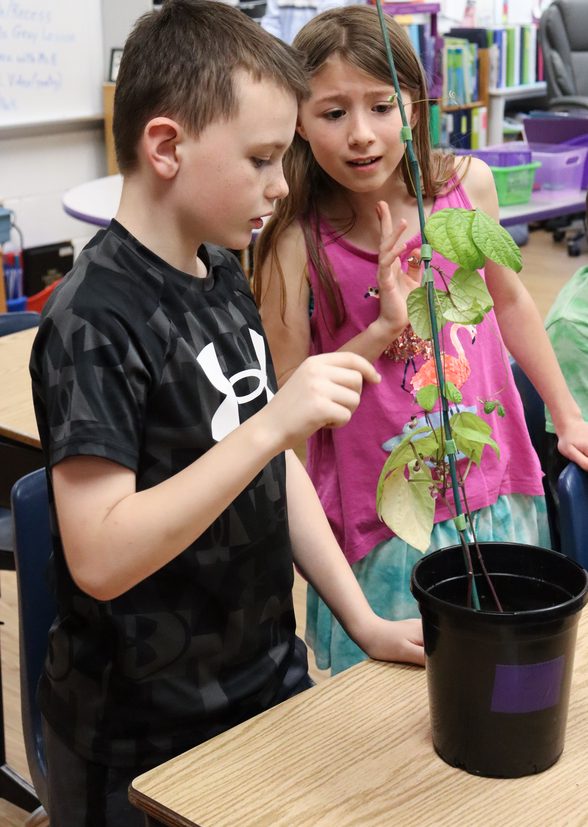
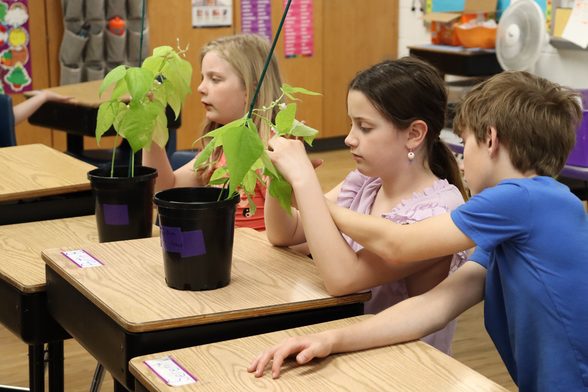
Left & Above: 4th grade students count flowers and the number of beans and peas on each of their plants at the conclusion of their experiment to determine which soil and additives were most fruitful.
The experiment for Mrs. Hammar’s 3rd grade class consisted of testing if microgreens will grow in the regolith, or moon dirt, and which additives will help them grow best such as worm castings, potting soil, liquid fertilizer and plant food. The hypothesis as determined by the class was that the fertilizer would produce the best crop, but that wasn’t the outcome.
The lunar regolith, or plain moon soil, out performed all additives and had the most success in both the number of seedlings sprouted and growth height, followed by the liquid fertilizer.
The 4th grade class grew beans and peas, specifically green and purple beans, found that the moon dirt grew more beans and peas than the traditional potting soil.
“It was really fun to watch the beans grow,” shared one student.
The 5th grade students skipped the beans and went straight to root vegetables and planted beets, carrots, turnips and two different types of radishes. The 5th grade class wasn’t as fruitful as their younger classmates. The royal radishes were most successful followed with some growth from the cherry radishes and the turnips. Despite falling short, the students had some ideas as to how the experiment could have been improved.
“If we were to do this experiment again, we would have chosen bigger pots because we think our plants were too crowded,” recommended one of the 5th graders.
We planted the moon!

